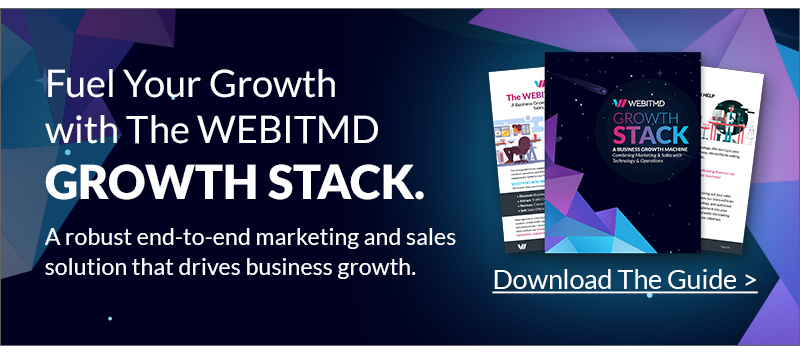10 years ago the digital marketing industry was busy writing articles on why companies should invest in blogging. Today we all know that blogs are highly valuable. The problem is, most companies are either blogging the wrong way, or they aren’t putting their blog in a position to reach its full potential (that is to say, drive revenue).
Today’s savvy organizations partner with Google and HubSpot certified growth marketing agencies to improve their blog, but more importantly to enhance their overall marketing strategy to hit sales targets. Once a growth marketing client is fully immersed into their newly formed custom strategy, companies begin to see just how paramount the blog is to every channel of the overall approach, and they see just how big of a role it plays into improving their bottom line.
This article is intended to help business owners, members of the C-Suite, and managerial teams understand the value in working with a growth marketing agency that utilizes advanced blogging strategies to empower the overall strategy. It will also help leaders understand how to blog the right way, and how to leverage blog content to generate leads and convert traffic all within the engineered interior of a custom growth marketing stack.
First Things First, What is a Growth Marketing Stack?
A growth marketing stack is a set of customized strategies and tools pieced together by a growth-driven digital marketing agency that work together to achieve the same goals. When businesses invest in a growth marketing stack, they benefit from a multi-channel approach to drive traffic, nurture and convert traffic.
The foundation of a custom growth marketing stack is built on the understanding of buyers, and how customers make their purchasing decisions. Although growth marketing is not new, it is also not widely known, as traditional and familiar strategies like general PPC and SEO are still the focus for many brands who fear change. But change is critical to growth, and when companies work with growth marketing agencies like WEBITMD, the risk is minimal because every change that’s made is backed by concrete data, and a solid understanding of your business, it’s sales cycle, and your customers.
At the heart of every growth marketing stack is content, and blogs are the rocket fuel that keep the conversion process running full speed ahead.
1. Growth Marketing Agencies Make Blogs Relevant to Buyer Needs, not Brand Needs
Buyers don’t care if your products won awards, are constructed from the finest materials, or if the angel Gabriel himself flew down from heaven and kissed it. They want to know if the product or service will provide a solution to their needs, and make their life better.
This means that buyers need to have a better understanding of their pain points, the various options out there for resolving their problems, and then learn how your company offers the best solution to their needs. These are the things your customers care about, so your blog needs to be reconstructed to deliver the right messaging, while still offering SEO value, supporting inbounds campaigns, and establishing your company as an industry leader.
This is where growth marketing agencies shine. With a CRM like HubSpot that tracks every detail of the buyer’s journey, content creators can see where a contact enters the funnel, the content they engaged with, and uncover a number of other telling points that help them learn more about the buyer’s needs. In addition, robust CRMs reveal the lead’s identity and even their job title and place of employment–data that helps marketers better understand the pain points people have, and the types of solutions they seek.
Additionally, growth marketing agencies are able to harvest information directly from internal sales teams and combine these findings to analytics to create blogs that target buyers at an intimate level.
2. Pillar Pages and Blog Clusters
Once a blog is using an approach that targets the right buyers with needs-based solutions, it’s time to properly structure these blogs for two main reasons: (1) to create a structured silo of content that’s easy for Google bots to crawl and understand (this helps increase rankings, page authority, and user engagement) and (2) create a better user experience so your readers can find specific types of information. This is where growth marketing agencies use pillar pages to maximize content value in multiple channels.
A pillar page is generally a primary product page and contains long-form content that’s been optimized to attract organic traffic. They link to a website’s homepage thus sharing relevant context to the strongest part of the website as a whole.
Once pillar pages have been created, blog clusters are planned and created to continuously feed these pages with various topics targeting multiple buyer groups that link to one another, and to the pillar page they are supporting. The idea is to facilitate a circulatory system for “SEO juice” to flow through the entire site, enriching multiple pages, while achieving a number of goals that range from improving rankings to increasing organic lead conversion.
The strategy is complex, yet highly valuable as it plays a significant role in generating revenue from blog content.
3. CTAs
Every blog should have a CTA if your goal is to convert organic traffic into paying customers. Your company’s main goal isn’t just to create an educational library of content to make you look like an authoritative leader but instead to play a role into your organizational growth. That said, the CTA should encourage a desired act that leads to generating revenue, and that asks readers to perform a natural “next step” that would come from reading the blog its embedded in. For example, a blog can educate readers about their needs and help them learn more about their pain points before a CTA leads them to a piece of content that helps them learn about their various options–a required step that leads to a sales conversion. In other cases, a blog can be written for people in the decision stage of their buyer’s journey, and lead them to a shopping cart.
The main point here is that blogs need to be used as conversion tools, and an appropriate CTA with the right messaging and design that resonates with target buyers will empower blog content to converting leads into customers, again and again.
Can a Custom Growth Stack with a Strategic Blog Help You Hit Your Sales Goals?
Download our FREE guide on the WEBITMD Growth Stack. See if the strategy makes sense for your business, and give us a call. Together, we can find the right custom solution that will facilitate growth and delight your customers.









.jpg)



.jpg)





![5 Reports to Elevate Your HubSpot Sales Dashboard [+ Examples]](https://blog.webitmd.com/hs-fs/hubfs/Imported_Blog_Media/6-winning-examples-of-a-hubspot-sales-dashboard-2.png?width=767&name=6-winning-examples-of-a-hubspot-sales-dashboard-2.png)